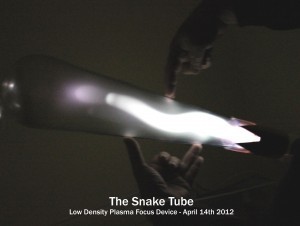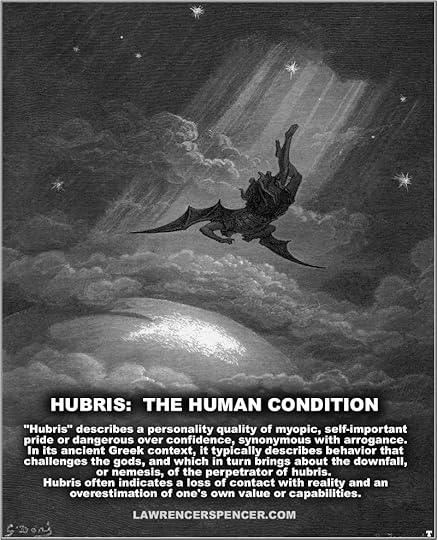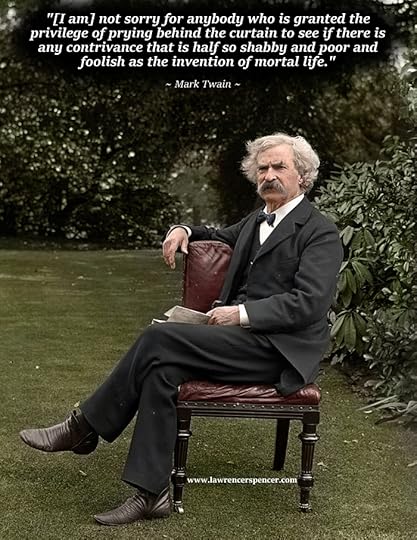Lawrence R. Spencer's Blog, page 74
September 26, 2022
WHAT IS LOVE?
Republished by Blog Post Promoter
“Love” is not a good word. I don’t like it because it has too many different definitions! Most of the time people use this word in a sexual context, which is a very small and limited definition. So, I spent a little time to study the different definitions of “love”. Here is what I found out:
Here is the dictionary definition of “love”:
1 a (1) : strong affection for another arising out of kinship or personal ties < maternal love for a child > (2) : attraction based on sexual desire : affection and tenderness felt by lovers (3) : affection based on admiration, benevolence, or common interests < love for his old schoolmates >
b : an assurance of affection < give her my love >
2 : warm attachment, enthusiasm, or devotion < love of the sea >
3 a : the object of attachment, devotion, or admiration < baseball was his first love >
b (1) : a beloved person : darling —often used as a term of endearment (2) British —used as an informal term of address
4 a : unselfish loyal and benevolent concern for the good of another: as (1) : the fatherly concern of God for humankind (2) : brotherly concern for others
b : a person’s adoration of God
5 : a god or personification of love
The origin of the word “love” in English is from the Old English word lufu; akin to Old High German luba, or Old English lēof (dear), Latin lubēre, libēre, which means “to please”.
The Greeks used the word “agape” to express a purely spiritual love.
The word “Platonic” is Intellectual love, like the love of Art, or Beauty, or love of Learning, etc… This also applies to a genuine affinity or admiration between non-sexual relationships, as between friends, or companions.
“Amorous” and the Greek word “Eros” (erotic) are words for sexual or romantic love. For example, it is very easy for sexual partners to feel “amorous” toward each other, which is simply the “attraction” or “chemistry” caused by the biological programs inherent in many life forms. However, this does necessarily include a perception or understanding that there are spiritual beings inhabiting the bodies of the “love makers”.
The word “affinity”, which is the perception of how CLOSE or how DISTANT one feels emotionally, intellectually, spiritually or physically toward a thing, a being, or subject, or idea is a more accurate definition for non-sexual “love”. The CLOSEST that two entities can BE is to BE THE SAME, i.e. there is NO Distance between them.
In the book Alien Interview, the UFO pilot, Airl, uses the word “admiration”, which she says Is-Bes all desire more than ANY other quality.
“Another common denominator of IS-BEs (spiritual beings) is that admiration of one’s own illusions by others is very desirable. If the desired admiration is not forthcoming, the IS-BE will keep creating the illusion in an attempt to get admiration.”
Admiration means:
1 archaic : wonder
2 : an object of esteem
3 : delighted or astonished approbation
4: : a feeling of great respect and approval
There are words like “devotion” and “adoration” or “worship” that express a very intense “admiration” that contain “reverence”, “honor” or “respect”.
Then there are the concepts of “care” and “compassion” and “benevolence” which are often used for the feeling or emotion of mother and child, or between friends and companion, or by an individual for other members of their own race, or for life forms, or the universe at large.
This may be a quality of “love” of god for its own creations. This necessarily implies the willingness and ability to be Responsible for the creation and continued existence of what has been created. This kind of “love” may be all-pervasive, and eternal.
Ultimately, each individual has a personal experience, feeling or understanding of what “love” means for them. There may be as many definitions of “love” as there are beings who create or experience it.
— Lawrence R. Spencer. 2014.
September 25, 2022
HUBRIS — THE HUMAN CONDITION
Republished by Blog Post Promoter
September 24, 2022
JUST DO IT.
Republished by Blog Post Promoter
Self-destruction is the antithesis of the survival impulse. Individual life forms are driven by the impulse to survive. But, collectively, Humanity seems to be Hell-Bent on Self-Destruction. WTF?! Well, maybe it’s not all what it seems to be. Maybe there are a very small minority of beings who want to ensure that the rest of us don’t make it. Our assumption, as socially interdependent beings is that “everyone wants to survive”. Well, maybe Humanity has been infiltrated by PARASITES who secretly and quietly want to bleed us to death? Parasites in nature are abundantly present. Bacteria and viruses are some of the most abundant and ancient species of life on the planet. If you get cut on your leg while walking through the jungle, you will die of bacterial infection, if the wound is untreated. You want to survive, but so does the bacteria that invades your body and kills it. So what? Do you have more right to survive than bacteria?
But, if our natural impulse is to persist through time in our present form, why would we keep shooting ourselves in the foot?
September 23, 2022
EGYPTIAN ELECTRIC LIGHTS MYSTERY REVEALED
Republished by Blog Post Promoter
 Ancient Technology discovery reveals link between the Dendera Light and the Electric Universe (EU). Two researchers working on the lost technology of Ancient Egypt have rediscovered the secret of the Dendera Light (aka. The Snake Tube). Working on the assumption that the images on the temple walls reveal Ancient Technology, the researchers discovered that the snake tube images at the Dendera Temple are actually stable low density plasma focus devices – where the lotus flower is the plasma focus, the body of the snake is the ‘sausage’ or ‘birkland current’, the neck of the snake is the ‘Z’ pinch, and the head of the snake is the ‘plasmoid’.
Ancient Technology discovery reveals link between the Dendera Light and the Electric Universe (EU). Two researchers working on the lost technology of Ancient Egypt have rediscovered the secret of the Dendera Light (aka. The Snake Tube). Working on the assumption that the images on the temple walls reveal Ancient Technology, the researchers discovered that the snake tube images at the Dendera Temple are actually stable low density plasma focus devices – where the lotus flower is the plasma focus, the body of the snake is the ‘sausage’ or ‘birkland current’, the neck of the snake is the ‘Z’ pinch, and the head of the snake is the ‘plasmoid’.
Here is a photo from the Facebook page of William Sosa, discoverer of how the “Dendera LightS” of Egypt really worked, and PROOF that the Egyptian used electricity!
https://www.facebook.com/profile.php?id=100006585736657&fref=ts
 “Entering Dendera Hathor Temple for the first time (circa 1997). That is me in the blue shirt and tan shorts, holding my hat against the wind and chatting with our tour leader, Barbara Marciniak (carrying a black bag), while my roommate Tim Smith (in the foreground) looks on.
“Entering Dendera Hathor Temple for the first time (circa 1997). That is me in the blue shirt and tan shorts, holding my hat against the wind and chatting with our tour leader, Barbara Marciniak (carrying a black bag), while my roommate Tim Smith (in the foreground) looks on.
 I remember our tour guide, Terri Weiss (Power Places Tours), coming up to me about the time this photo was taken to tell me, ‘Bill, we only have about 45 minutes in the temple before we have to leave for Abydos. The group is going to the roof first, for a 20 minute group meditation and spin, and then be taken on a quick tour of the temple. You don’t need to do that. You need to find the crypt immediately, before the entire group converges on it. It is very cramped in there and I am getting a strong hit that you need some time in there to be alone. Go now…”
I remember our tour guide, Terri Weiss (Power Places Tours), coming up to me about the time this photo was taken to tell me, ‘Bill, we only have about 45 minutes in the temple before we have to leave for Abydos. The group is going to the roof first, for a 20 minute group meditation and spin, and then be taken on a quick tour of the temple. You don’t need to do that. You need to find the crypt immediately, before the entire group converges on it. It is very cramped in there and I am getting a strong hit that you need some time in there to be alone. Go now…”
I did not need much encouragement mind you. I went racing straight toward the south end of the temple, but I could not find the crypt. I found an Egyptian guide inside, but his English was poor and he did not understand me at first. So I took my notepad from my backpack and drew a quick snake tube drawing to show him. He looked at me and got a big smile on his face as he pointed towards a low/narrow passageway in the floor (this was before the entrance to the crypt would be completely dug out, where you had to crawl on your belly in the dirt to get in). I did not miss a beat. I pushed my claustrophobia aside, threw my backpack and hat in ahead of me and dove in head first… It was wonderful. I had 20 minutes in the crypt, just me and the guide. I was in heaven…
It was wonderful. I had 20 minutes in the crypt, just me and the guide. I was in heaven…
I quickly snapped a bunch of pictures and just stared at the images on the walls in awe. I could hardly breathe I was so excited… Little did I know on that day, that in 15 years I would actually discover how the Snake Tubes worked… (or that I would spend 3 whole days exploring Dendera during a future trip in 2012 – just 2 weeks after that discovery)
READ THE ENTIRE ARTICLE HERE:
http://www.thunderbolts.info/forum/phpBB3/viewtopic.php?f=10&t=14651
September 21, 2022
THE OZ FACTORS — A FEW READER REVIEWS
Republished by Blog Post Promoter
[image error] Pointing out the truth behind the cover story January 18, 2011
Pointing out the truth behind the cover story January 18, 2011
“This is a book that you will pick up and read again and again. The topics are fed to you slowly and then you are hit with the cold hard truth, that the public has been duped on every side. For those of you who wish to share the truth, this is a great reference book of material for conversation that can become explosive. I have the book close to me most of the time. This is one to own and keep reading as time goes on. There are more and more areas of reality to address than anyone has ever realized or cares to observe in most cases.. Few know the truth or even wish to accept the truth. Life is not always as it seems.” — pmgeorgic
 Review of The Oz Factors November 9, 2009
Review of The Oz Factors November 9, 2009
“The purpose of this book is to give a reader some guidelines in a quest to solve the mysteries of life. In my opinion, it serves that purpose well. Each of the 12 Oz factors represents a “common denominator of Western Logic which prevents observation, understanding, and the attainment of workable solutions to the problems of human origin and existence.” Further, the author states, “The allegorical story of The Wizard of Oz and its timeless characters is an appropriate vehicle through which to learn more about the mysteries of life.” If you read the book, I think you will agree. The learning of philosophical principles is thereby made not only easier, but actually delightful.
Here are a few of the Oz factors, to whet your appetite for the others:
Missing Information: Most real thinkers would agree that a valid concept of any subject that all information pertinent to it be available. But, study of almost any subject reveals not only that there are missing pieces to the puzzle, but that often the pieces are missing because vested interests (another Oz factor) have deliberately withheld them from the public.
Assumptions: Every theory presented by so-called authorities in science, religion, politics, etc contains one or more assumptions. If the assumption is false, the theory crashes. And so we suspect that the reason why assumptions are rarely listed is that their presence would expose the weaknesses in the view being advanced.
Source of Information: Many sources of information like to “play God”, promoting unquestioning belief in their views. Example from Science: “We’re smart and you’re not, so just accept what we say.” Example from Religion: “We’re holy and you’re not, so just accept what we say.” They need to be told, “Curb your dogma!”
False Information: Investigation shows that many sources deliberately put out false information, for reasons related to the benefit of the organization they support. To quote the author: “Lies replace the truth when a vested interest is being served.” I could go on with praises for this book, but space won’t permit it. Bottom line: If you want to be a clearer thinker and a more successful searcher for truth, you will do well to read this book.” — Robert W. Johnson
 Learn How To Think For Yourself September 16, 2010
Learn How To Think For Yourself September 16, 2010
“The Oz Factors” pulls back the curtain of misinformation and deceit carefully concealing the vested interests of the “great and powerful” of western civilization. What you have been taught about western history, science, archaeology and spirituality have been twisted, distorted and concealed from view to serve the self-serving lies and fears of wizards and witches. Learn how to think for yourself. You don’t have to be the victim of the “oz factors” any longer. Read this book. — Annonymous
BUILD YOUR WILD SELF AT THE NY ZOO
Republished by Blog Post Promoter
CLICK ON THE LINK BELOW TO PLAY THE NEW YORK ZOOS “BUILD YOUR WILD SELF” GAME!
IT’S FUN FOR ALL AGES!
MARK TWAIN: THOUGHTS ABOUT DEATH
Republished by Blog Post Promoter
Death is the starlit strip between the companionship of yesterday and the reunion of tomorrow.
– on monument erected to Mark Twain & Ossip Gabrilowitsch
All say, “How hard it is that we have to die”– a strange complaint to come from the mouths of people who have had to live.
– The Tragedy of Pudd’nhead Wilson and the Comedy of the Extraordinary Twins
Whoever has lived long enough to find out what life is, knows how deep a debt of gratitude we owe to Adam, the first great benefactor of our race. He brought death into the world.
– The Tragedy of Pudd’nhead Wilson and the Comedy of the Extraordinary Twins
The Impartial Friend: Death, the only immortal who treats us all alike, whose pity and whose peace and whose refuge are for all–the soiled and the pure, the rich and the poor, the loved and the unloved.
– Mark Twain, last written statement; Moments with Mark Twain, Paine
Pity is for the living, envy is for the dead.
– Following the Equator
Death, the refuge, the solace, the best and kindliest and most prized friend and benefactor of the erring, the forsaken, the old and weary and broken of heart.
– Adam speech, 1883
Life was not a valuable gift, but death was. Life was a fever-dream made up of joys embittered by sorrows, pleasure poisoned by pain; a dream that was a nightmare-confusion of spasmodic and fleeting delights, ecstasies, exultations, happinesses, interspersed with long-drawn miseries, griefs, perils, horrors, disappointments, defeats,humiliations, and despairs–the heaviest curse devisable by divine ingenuity; but death was sweet, death was gentle, death was kind; death healed the bruised spirit and the broken heart, and gave them rest and forgetfulness; death was man’s best friend; when man could endure life no longer, death came and set him free.
– Letters from the Earth
Manifestly, dying is nothing to a really great and brave man.
– Letter to Olivia Clemens, 7/1/1885 (referring to General Grant)
How lovely is death; and how niggardly it is doled out.
– Letter to Olivia Clemens, 8/19/1896
It is a solemn thought: dead, the noblest man’s meat is inferior to pork.
– More Maxims of Mark, Johnson, 1927
[I am] not sorry for anybody who is granted the privilege of prying behind the curtain to see if there is any contrivance that is half so shabby and poor and foolish as the invention of mortal life.
– Letter to Mary Mason Fairbanks, 1894
I think we never become really and genuinely our entire and honest selves until we are dead–and not then until we have been dead years and years. People ought to start dead, and they would be honest so much earlier.
– Mark Twain in Eruption
To die one’s self is a thing that must be easy, & light of consequence; but to lose a part of one’s self–well, we know how deep that pang goes, we who have suffered that disaster, received that wound which cannot heal.
– Letter to Will Bowen, 11/4/1888
Favored above Kings and Emperors is the stillborn child.
– Notebook, #42 1898
All people have had ill luck, but Jairus’s daughter & Lazarus the worst.
– Notebook #42, 1898
No real estate is permanently valuable but the grave.
– Notebook #42, 1898
Death is so kind, so benignant, to whom he loves; but he goes by us others & will not look our way.
– Letter to W. D. Howells, 12/20/1898
A distinguished man should be as particular about his last words as he is about his last breath. He should write them out on a slip of paper and take the judgment of his friends on them. He should never leave such a thing to the last hour of his life, and trust to an intellectual spurt at the last moment to enable him to say something smart with his latest gasp and launch into eternity with grandeur.
– “The Last Words of Great Men”, 1869
Death….a great Leveler — a king before whose tremendous majesty shades & differences in littleness cannot be discerned — an Alp from whose summit all small things are the same size.
– Letter to Olivia Clemens, 10/15/1871
September 20, 2022
MY PERSONAL MONA LISA
Republished by Blog Post Promoter

“Much like Leonardo da Vinci, I worked intermittently on this single painting over a period of many years, never satisfied that it was finished, and continually improving upon the original. This painting is my personal Mona Lisa, my daughter, Maria.
We had a live-in servant for many years, named Tanneke Everpoel, hired and paid by Maria Thins. She did all of the “heavy labor”, as it were: cooking, cleaning, washing clothes, carrying water, tending fires, and a myriad other chores, including helping with the children. However, the expense of paying her wage and room did not include standing for endless hours, day after day, while I painted this portrait! My daughter, Maria, was lovelier and much more readily accessible for the task of standing for this portrait.
It is argued, convincingly, that the immortal painting by Leonard was his own self-portrait as his own, feminine reflection. What man, or woman, regardless of sexual preference in a given lifetime, has not inhabited the flesh of ten thousand bodies, some human, many not, through a nearly infinite cascade of galaxies, stars and planets come and gone. Is not survival a nearly infinite game, in which we interchange ourselves as the players of many parts?
Leonard kept his portrait with him all his life. He never considered that it was complete or perfect. Nor did he ever intend to sell it. How could one sell a most cherished reflection of himself? It is more meaningful than one’s own body, which only disguises the inner self, the essence of spirit that animates the fragile flesh.
In fact, a body hides the reflection of the soul! How can any substance, especially that as rude and fragile as meat, reveal the inherent qualities an immortal nothingness? Indeed, it is the fundamental challenge and the most formidable task of an artist to reveal it!
The name given to this painting by others, “The Milkmaid”, is a sacrilege! It rivals the incomprehension others have for Leonardo’s personal masterpiece. Yet, how can anyone truly understand that a painting is meant to reflect the essence of an immortal being, seen through the eyes of another?
She is painted with angelic colors: blue, gold and white, in contrast to the menial nature of her station in life. From her issues, for me, the Milk and Bread of Life. Life is embodied in her and through her. Women, are the source of children, the source of energy, the source of care. There is no more vital responsibility for any being who plays the game of life, than to confront dreary daily tasks. To humbly make the daily loaf. To soak that bread, mix and soften it with milk, make it warm and feed it to a teething child. Survival is made of such things.
In those days I viewed life as idyllic. My dreams were more real than reality. All things were a possibility. Tragedy could not find me. Until it did, of course. Even when we lost a child, which we did with several, my wife, Catharina, remained resolute in her Faith. God guided us. He did what was best. We knew not why and need not question His purpose for us.
I have no such faith in predetermination. A loaf of grain, clean water and a bed was my fare. Time and a place to paint, uninterrupted, were necessities. My love, shared with wife and family, was the staple diet of my life. I assumed, as a Fool who knows not his own mortality, that they would endure, even when I was gone.”
_______________________________________
Excerpt from the book VERMEER: PORTRAITS OF A LIFETIME, by Lawrence R. Spencer
DOWNLOAD THIS BOOK FROM
http://itunes.apple.com/us/book/vermeer/id443800993?mt=11

September 19, 2022
ENJOY A OXYGEN-RICH HOLIDAY
Republished by Blog Post Promoter
 Peter, The Potted Plant is one of the fictional, sentient beings who are characters in my book The Big Bleep: The Mystery of A Different Universe.
Peter, The Potted Plant is one of the fictional, sentient beings who are characters in my book The Big Bleep: The Mystery of A Different Universe.










